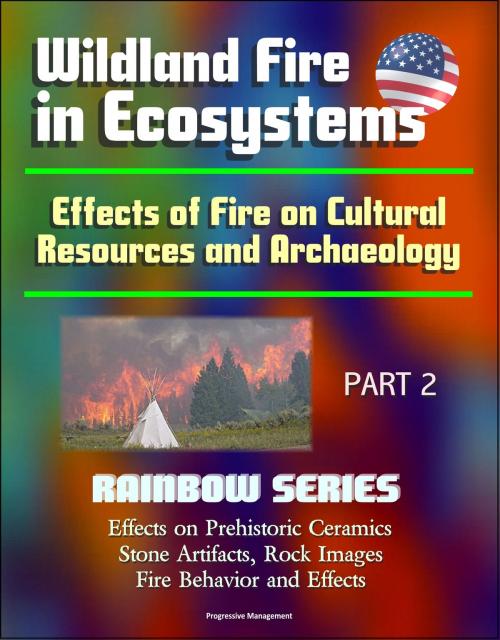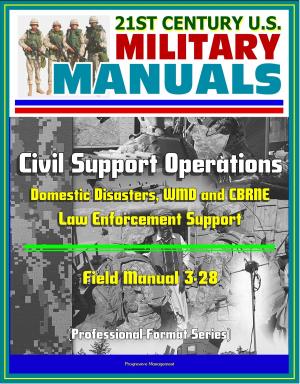Wildland Fire in Ecosystems: Effects of Fire on Cultural Resources and Archaeology (Rainbow Series) Part 2 - Effects on Prehistoric Ceramics, Stone Artifacts, Rock Images, Fire Behavior and Effects
Nonfiction, Science & Nature, Technology, Fire Science, Social & Cultural Studies, Social Science, Archaeology| Author: | Progressive Management | ISBN: | 9781310325243 |
| Publisher: | Progressive Management | Publication: | December 1, 2014 |
| Imprint: | Smashwords Edition | Language: | English |
| Author: | Progressive Management |
| ISBN: | 9781310325243 |
| Publisher: | Progressive Management |
| Publication: | December 1, 2014 |
| Imprint: | Smashwords Edition |
| Language: | English |
This state-of-knowledge review provides a synthesis of the effects of fire on cultural resources, which can be used by fire managers, cultural resource (CR) specialists, and archaeologists to more effectively manage wildland vegetation, fuels, and fire. The goal of the volume is twofold: (1) to provide cultural resource/archaeological professionals and policy makers with a primer on fuels, fire behavior, and fire effects to enable them to work more effectively with the fire management community to protect resources during fuels treatment and restoration projects and wildfire suppression activities; and (2) to provide fire and land management professionals and policy makers with a greater understanding of the value of cultural resource protection and the methods available to evaluate and mitigate risks to CR. The synthesis provides a conceptual fire effects framework for planning, managing, and modeling fire effects (chapter1) and a primer on fire and fuel processes and fire effects prediction modeling (chapter 2). A synthesis of the effects of fire on various cultural resource materials is provided for ceramics (chapter 3), lithics (chapter 4), rock art (chapter 5), historic-period artifacts/materials (chapter 6), and below-ground features (chapter 7). Chapter 8 discusses the importance of cultural landscapes to indigenous peoples and emphasizes the need to actively involve native people in the development of collaborative management plans. The use and practical implications of this synthesis are the subject of the final chapter (chapter 9).
Chapter 3 * Fire Effects on Prehistoric Ceramics * Materials and Mechanics of Pottery Construction * Pottery as Raw Material * Vessel Formation and Preparation for Firing * Decoration * Clay Firing * Firing Effects on Non-Clay Inclusions * Pottery Use and Post-Depositional Changes * Fire Effects Research * Fire Effects on Appearance * Fire Effects on Analytical Properties * Conclusions * Chapter 4 * Fire Effects on Flaked Stone, Ground Stone, and Other Stone Artifacts * Introduction * Lithic Artifacts and Fire * Some Caveats * Flaked Stone * Chert: Flint, Jasper, Chalcedony, and Related Silicates * Obsidian * Basalt * Quartz, Quartzite, Mudstone, Rhyolite, Siltstone, Slate, and Vitrified and Welded Tuff * Ground Stone * Thermal Effects on Rock Used as Heating or Cooking Stones * Other Stone Artifacts * Implications for Cultural Resource Protection and Fire Planning * Chapter 5 * Fire Effects on Rock Images and Similar Cultural Resources * Introduction * Setting and Placement * Heritage And Research Values * Fire Effects * Field Examples * Hawaii * Arizona * Texas * California * Colorado * Utah * Washington * Kentucky * Nevada * Field Examples: Observations * Mitigation and Protection * Restoration and Stabilization * Resources Available
This state-of-knowledge review provides a synthesis of the effects of fire on cultural resources, which can be used by fire managers, cultural resource (CR) specialists, and archaeologists to more effectively manage wildland vegetation, fuels, and fire. The goal of the volume is twofold: (1) to provide cultural resource/archaeological professionals and policy makers with a primer on fuels, fire behavior, and fire effects to enable them to work more effectively with the fire management community to protect resources during fuels treatment and restoration projects and wildfire suppression activities; and (2) to provide fire and land management professionals and policy makers with a greater understanding of the value of cultural resource protection and the methods available to evaluate and mitigate risks to CR. The synthesis provides a conceptual fire effects framework for planning, managing, and modeling fire effects (chapter1) and a primer on fire and fuel processes and fire effects prediction modeling (chapter 2). A synthesis of the effects of fire on various cultural resource materials is provided for ceramics (chapter 3), lithics (chapter 4), rock art (chapter 5), historic-period artifacts/materials (chapter 6), and below-ground features (chapter 7). Chapter 8 discusses the importance of cultural landscapes to indigenous peoples and emphasizes the need to actively involve native people in the development of collaborative management plans. The use and practical implications of this synthesis are the subject of the final chapter (chapter 9).
Chapter 3 * Fire Effects on Prehistoric Ceramics * Materials and Mechanics of Pottery Construction * Pottery as Raw Material * Vessel Formation and Preparation for Firing * Decoration * Clay Firing * Firing Effects on Non-Clay Inclusions * Pottery Use and Post-Depositional Changes * Fire Effects Research * Fire Effects on Appearance * Fire Effects on Analytical Properties * Conclusions * Chapter 4 * Fire Effects on Flaked Stone, Ground Stone, and Other Stone Artifacts * Introduction * Lithic Artifacts and Fire * Some Caveats * Flaked Stone * Chert: Flint, Jasper, Chalcedony, and Related Silicates * Obsidian * Basalt * Quartz, Quartzite, Mudstone, Rhyolite, Siltstone, Slate, and Vitrified and Welded Tuff * Ground Stone * Thermal Effects on Rock Used as Heating or Cooking Stones * Other Stone Artifacts * Implications for Cultural Resource Protection and Fire Planning * Chapter 5 * Fire Effects on Rock Images and Similar Cultural Resources * Introduction * Setting and Placement * Heritage And Research Values * Fire Effects * Field Examples * Hawaii * Arizona * Texas * California * Colorado * Utah * Washington * Kentucky * Nevada * Field Examples: Observations * Mitigation and Protection * Restoration and Stabilization * Resources Available















